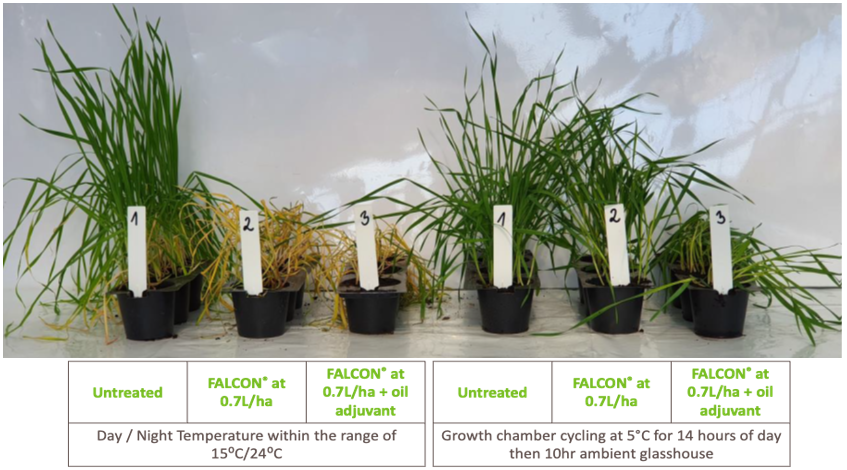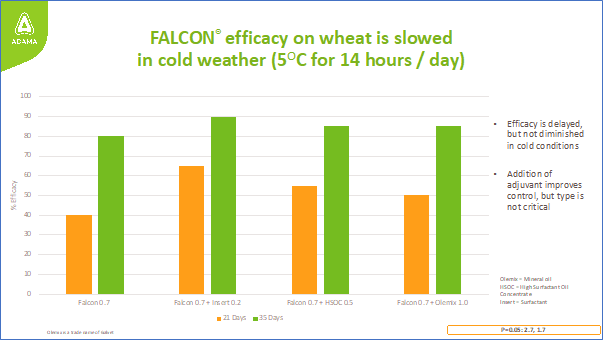
Powering up weed control with propaquizafop

With spells of relatively mild weather being interrupted by cooler, sometimes frosty conditions, it is worth considering how the use of adjuvants can help to power up the efficacy of herbicide actives such as propaquizafop
As a standalone product for the control of volunteer cereals, ryegrass, common couch and sterile brome in spring crops including sugar and fodder beet, beans, potatoes, spring OSR and various vegetables, ADAMA’s straight propaquizafop herbicide, FALCON® (100 g/L propaquizafop), provides excellent efficacy. It can also contribute to the control of black-grass as part of a herbicide management strategy where mixtures and sequences of herbicides with alternative modes of action are used.
However, the efficacy of active ingredients such as this – and many other ACC-ase herbicides – is heavily dependent on temperature. For example, propaquizafop works best at 15-25oC.
In situations where this temperature range isn’t likely to be reached (e.g. during a cold, dry spring), an adjuvant suited to ACC-ase herbicides can help to improve the efficacy of propaquizafop.
As the image below shows, FALCON comprehensively controls winter wheat when applied in glass-house conditions at temperatures in the range of 15-24oC (2nd and 3rd pots from left). However, at lower temperatures (in this case overnight at 5oC for 14 hours, followed by 10 hours at an ambient temperature), the efficacy of the propaquizafop is delayed (2nd pot from right) due to a reduced rate of movement of the herbicide into weeds and particularly to the part of the target plants on which they act (notably the meristematic tissues of the leaves).

The addition of an adjuvant mitigates this effect (far right), by enabling more of the active ingredient to enter and move within weeds, with adjuvants of all major classes (mineral oils, surfactants and high surfactant oil concentrates) all improving control (see graph below).

The simple message is therefore to consider not only which weeds you need to control and which active ingredient to use, but also how and when to apply your chosen herbicide.


FALCON® (100 g/L propaquizafop)is a foliar acting selective herbicide with systemic activity on a wide range of grass weeds and volunteers for use in oilseed rape, sugar and fodder beet, beans, potatoes and a range of vegetables.